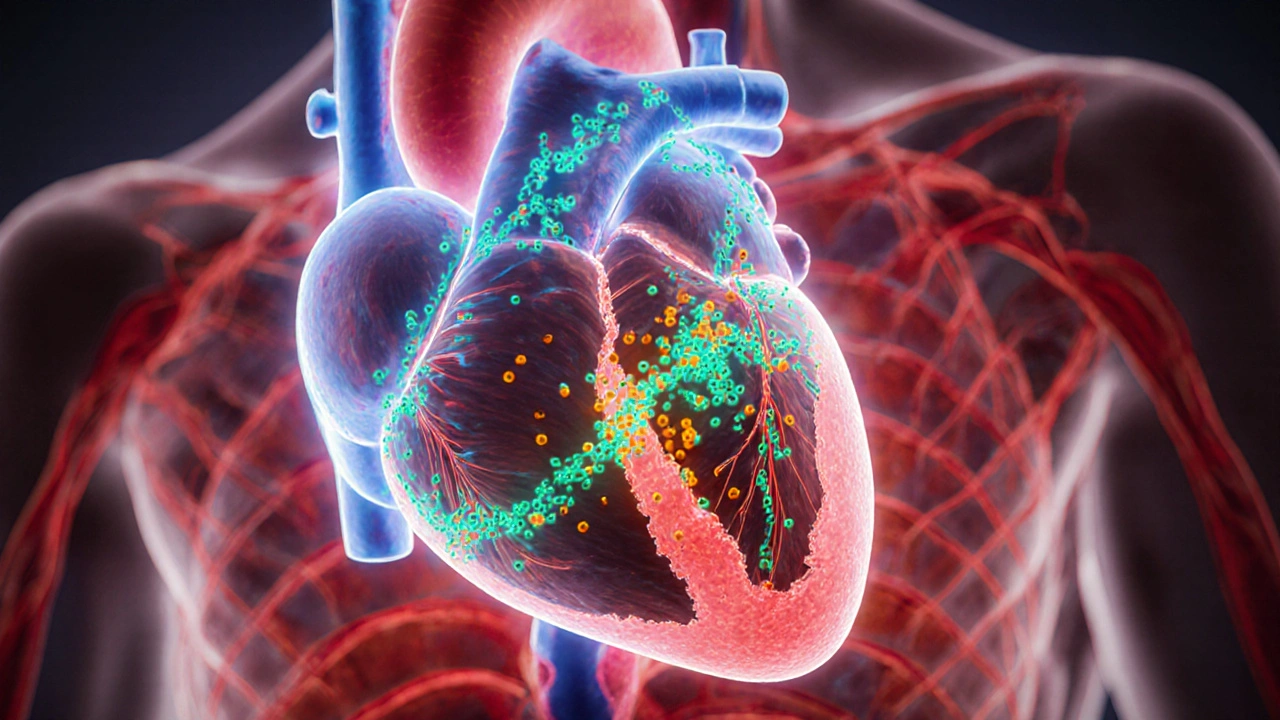Homocysteine: What It Is and Why It Matters
When talking about homocysteine, an amino‑acid produced during protein metabolism that circulates in the blood. Also known as Hcy, it becomes a health signal when levels rise too high. Elevated homocysteine is tied to cardiovascular disease, conditions like heart attack, stroke, and peripheral artery disease, and it often points to gaps in folic acid, a B‑vitamin that helps convert homocysteine into methionine. Genetic factors, especially variations in the MTHFR gene, can slow that conversion, making supplementation and lifestyle tweaks crucial. Below we break down how these pieces fit together and what you can do about them.
Key Factors That Influence Homocysteine Levels
First, nutrition plays a starring role. B‑vitamins B6, B12, and especially folic acid act as cofactors in the methylation cycle that clears homocysteine from the bloodstream. When you’re low on any of these, the cycle stalls and levels climb. Foods rich in these nutrients—leafy greens, beans, fortified cereals, and lean meats—are the cheapest way to keep the numbers in check. If diet alone isn’t enough, a daily supplement containing 400‑800 µg of folic acid plus adequate B6 and B12 often brings levels down within weeks.
Second, genetics add a layer of complexity. The MTHFR (methylenetetrahydrofolate reductase) enzyme is encoded by a gene that varies between people. The common C677T and A1298C variants reduce enzyme efficiency, meaning the body struggles to convert folic acid into its active form. If you carry two copies of a reduced‑function variant, you may need methyl‑folate rather than synthetic folic acid to see a drop in homocysteine. Knowing your genotype helps tailor the right supplement strategy.
Third, lifestyle habits matter. Smoking, excessive alcohol, and a sedentary routine each push homocysteine higher. Even moderate coffee intake can have a modest effect in sensitive individuals. On the flip side, regular exercise—especially aerobic activity—helps improve endothelial function and can modestly lower homocysteine. Stress management techniques like mindfulness or yoga also support the methylation pathway by reducing cortisol spikes that interfere with B‑vitamin metabolism.
Fourth, medical conditions can act as hidden drivers. Kidney disease, hypothyroidism, and certain autoimmune disorders hinder the body’s ability to clear homocysteine. If you have any of these, a routine blood test that includes homocysteine measurement becomes a useful monitoring tool. Treating the underlying condition often corrects the spike without extra supplements.
Finally, medication interactions deserve a look. Some drugs—like methotrexate, certain antiepileptics, and the cholesterol‑lowering statins—can raise homocysteine as a side effect. If you’re on one of these, discuss with your doctor whether adding a B‑vitamin complex could offset the rise. In many cases, adjusting the dose or switching to an alternative medication can resolve the issue.
Putting all these pieces together creates a clear picture: homocysteine is a metabolic marker that reflects diet, genetics, lifestyle, and health status. Managing it isn’t about a single fix; it’s a combination of eating enough B‑vitamins, addressing genetic needs, moving more, and keeping an eye on any medical or pharmaceutical factors that might be nudging the level upward.
For readers who want practical steps, start with a simple blood test to see where you stand. If the result is above 15 µmol/L, aim to boost folic acid intake either through leafy greens or a balanced supplement. Pair that with B6 (10‑25 mg) and B12 (500‑1000 µg) to support the whole pathway. If you’ve already tried the diet route and levels stay high, consider getting a genetic test for the MTHFR variants. The result will tell you whether a methyl‑folate supplement is more effective for you.
Keep in mind that lowering homocysteine is only one part of a heart‑healthy plan. Regular blood pressure checks, cholesterol monitoring, and maintaining a healthy weight are equally important. When you bring all these habits together, you not only trim homocysteine but also reduce the overall risk of cardiovascular disease, the very outcome that high homocysteine threatens.
Now that you understand the main players—diet, genetics, lifestyle, medical conditions, and medication—take a moment to review the collection below. You’ll find detailed guides on specific medications, how to buy them safely online, and additional tips that intersect with homocysteine management, such as the role of B‑vitamins in mental health and the impact of certain drugs on heart health. Dive in to see the practical advice that can help you keep homocysteine in a healthy range.

How Folate Deficiency Impacts Cardiovascular Health: Causes, Risks, and Prevention
Learn how folate deficiency raises homocysteine, damages arteries, and increases heart disease risk, plus practical diet and supplement tips to protect your cardiovascular health.
More Detail